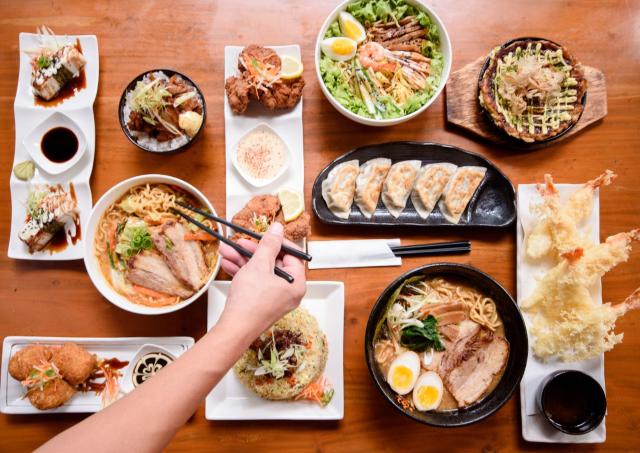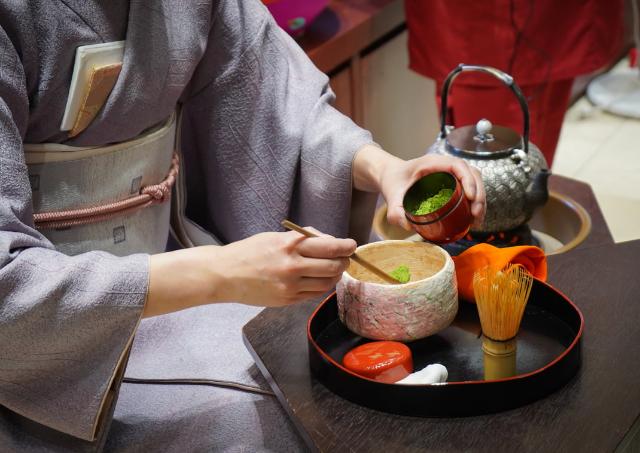Gluten-Free Food in Japan: A Comprehensive Guide
Japan is renowned for its gastronomy, making it a must-visit for all food enthusiasts. While exploring the country's culinary delights is an integral part of the journey, it's important for individuals with special dietary requirements to come prepared. This article primarily serves as a guide for gluten, although it also touches on other specific topics such as vegan, lactose-free or dairy-free diets.
Table of Contents
- Navigating Gluten-Free Japanese Cuisine
- How to Find Gluten-Free Options in Japan
- Utilizing a Translation Card for Dietary Needs
- Shopping for Gluten-Free Products in Japan
- Preparing Gluten-Free Meals While Travelling
- Japanese Vending Machines: A Gluten-Free Oasis
- Lactose-Free Options in Japan's Coffee Shops
- Conclusion - Lessons Learned
What is Gluten-Free Food?
Gluten-free food refers to dishes that do not contain gluten, a type of protein found in grains such as: wheat, rye, barley and triticale (a cross between wheat and rye). Many grains and starches like quinoa, rice, corn, and potatoes are gluten-free.
Today, a growing number of restaurants and food manufacturers globally are offering gluten-free alternatives. Thus, making it easier for those with dietary restrictions to enjoy diverse culinary experiences during their visit. Gluten-free food is essential for individuals with different types of gluten intolerance, where gluten intake can cause severe health issues.
Navigating Gluten-Free Japanese Cuisine
Notably, many gluten-free restaurants in Japan also cater to vegetarian diets, offering a convenient choice for those following multiple dietary restrictions.
Japanese cuisine largely consists of naturally gluten-free ingredients, such as rice, fish, seaweed, wasabi, and fresh vegetables. However, it’s crucial to note that soy sauce, a prominent component of Japanese cuisine usually contains gluten. But do not worry, tamari sauce can be used as a gluten-free alternative!
For those looking to eat gluten-free in Japan it can be challenging due to the prevalence of gluten in traditional foods, but there are solutions available, including specific brands and products. Gluten-free soy sauce is a critical ingredient for those with gluten sensitivities, when dining out in Japan. Miso, although originally gluten-free, requires ingredient verification. Hidden gluten can be found in various Japanese foods, so careful ingredient verification is necessary.
When travelling in Japan, the findmeglutenfree.com website and app can be helpful, particularly for those who are strictly avoiding gluten. Google reviews and evaluations can also be very useful. Additionally, it is advisable to check up on the opening hours of restaurants, as they may have limited hours of operation.
Finally, for individuals avoiding milk protein or lactose, caution is advised with Japanese patisseries, as many delightful sweets are made with milk.
How to Find Gluten-Free Options in Japan
Recognizing gluten-free establishments in Japan might require a bit of diligence. This is both due to the language barrier and the unfamiliarity with the local food culture. Individuals with gluten intolerance face additional challenges, as understanding and awareness of the condition is minimal among the Japanese population. This results in a scarcity of gluten-free options in restaurants and bakeries.
Moreover, using translation tools or apps can be of great assistance when interacting with restaurant staff. Phrases such as “Komugi, komugiko, ka guruten wa fukumarete imasuka?” (Does it contain wheat, wheat flour, or gluten?) could prove to be invaluable in ensuring that your meals are safe to eat.
At times, restaurants may also display an allergen chart, showing what allergens (including gluten) are present in their dishes. Reviewing these charts before ordering can save a lot of trouble and uncertainty. Additionally, the availability of gluten free noodles, such as 100% rice and buckwheat noodles is growing, making it easier for those with dietary restrictions to find suitable options.
Utilizing a Translation Card for Dietary Needs
For individuals seeking gluten-free options, a translation card can be a valuable tool when dining out in Japan. This card includes essential information translated into Japanese about specific dietary requirements for gluten-free consumption. If you have resonated with this blog so far, you are welcome to download our free translation card here to ensure that you will enjoy a smooth and safe journey to Japan.
Having this card at hand can eliminate language barriers and simplify the ordering process, ensuring that the meal prepared aligns with the individual's dietary restrictions.
Or you can copy the following shorter text, to explain your dietary needs:
English: I am looking for gluten-free food, as I cannot have it in my diet. I am not able to eat foods that contain wheat, barley, rye, or any other gluten-containing ingredients.
Japanese: 私は小麦とグルテンに対する重度のアレルギーでグルテンを避けないといけないため、小麦、大麦、ライ麦、またはグルテンを含む食品は食べることができません。
Shopping for Gluten-Free Products in Japan
When it comes to shopping for gluten-free products in Japanese grocery stores, it can be a bit of a challenge especially due to the language barrier. However, with a little knowledge and preparation, you can navigate your way through the aisles with ease. The key is understanding the labels: the character 麦 (mugi) identifies words like barley, wheat, and rye, which are all ingredients that those on a gluten-free diet should avoid.
You can find gluten-free snacks in various stores in Japan, including children's stores and specialty import shops.
Keep in mind that traditional Japanese foods like sushi, sashimi, onigiri and rice dishes are usually gluten-free. Though we do recommend always double-checking for any sauces or dressings. You can also safely eat salted boiled eggs, salads, fruits, vegetables, and smoothies, and you will find these products in every convenience store.
Specialized establishments in cities like Osaka and Tokyo offer gluten-free bread, made from unique ingredients such as rice flour.
Additionally, do not be afraid to ask for assistance from store employees or use translation apps to check the ingredients of each product.
One thing that could be helpful whilst shopping is the camera translation function on the Google Translate app. Here you can scan the ingredient list to help you navigate which products to choose.
Preparing Gluten-Free Meals While Travelling
In major cities, there are usually 2-3 fully gluten-free restaurants and possibly 1-2 bakeries or pastry shops. However, in rural areas, finding such establishments is unlikely. To ensure your safety, it is advisable to prepare in advance and carry extra food with you.
Take note of your accommodation facilities, as having access to a kettle, microwave, fridge, or separate kitchen expands your food options. When eating gluten-free while travelling, understanding the challenges posed by the prevalence of wheat in traditional dishes and condiments is crucial. Knowing safe options and places where gluten-free meals can be found will make your journey go a lot smoother.
Consider stocking up on semi-prepared, instant and canned food items, for example: tuna, gluten-free packaged bread, puffed rice, protein, energy or granola bars, packaged muffins, and grape sugar.
These food choices are suitable for environments with temperatures up to 35 degrees Celsius, to prevent melting or spoilage. Additionally, they are convenient for hiking trips or long days of sightseeing. It is also important to know which gluten-free foods are available in Japan, including popular brands and essential cooking products to ensure you have safe and suitable options.
Japan's Vending Machines: A Gluten-Free Oasis
Most beverages are naturally gluten-free, except for barley tea. It’s important to note that some drinks may contain milk, for those who avoid dairy products. Luckily, Japan has a myriad of vending machines which serve customers 24/7.
Vending machines offer a wide variety of beverages from hot and soupy drinks, to cold, refreshing juices, teas, and coffees. However, unfortunately, it’s not always clear from the selection in vending machines, as we can’t physically examine the ingredients. In this case, we would advise opting for the more obvious gluten-free options such as clear green teas, black coffee, water, and international branded soft drinks.
Fun fact: in Japan, cider refers to a non-alcoholic, carbonated soft drink.
Lactose-Free Options in Japan's Coffee Shops (the milk dilemma)
In Japan, lactose-free options are not widely available. Therefore, individuals who need to avoid lactose should choose dairy-free alternatives. Soy milk and oat milk are commonly found in coffee shops, just as in many other countries. However, it is important to note that not all variations of these products are gluten-free. Even if a place is dedicated to being gluten-free, it is advisable to inquire about the content of their soy or oat milk.
Pro tip: Starbucks offers cappuccino with almond milk. Alternatively, you can opt for regular coffee and order an americano.
Conclusion - Lessons Learned
In summary, we have gained valuable insights and knowledge throughout this journey.
Japan is a country that caters well to gluten-intolerant individuals, making it highly livable. However, when travelling to Japan it is important to pay extra attention to maintaining a gluten-free diet. The challenges of being gluten-free in Japan include the content of wheat in traditional Japanese foods, such as: soy sauce, noodles, and even sushi. Preparation, understanding food labels, and exploring naturally gluten-free Japanese dishes are key solutions.
Planning your meals in advance and aligning them with the restaurant hours will ensure that you don’t end up hungry at the doors of a closed establishment. To ensure that you have access to gluten-free options, it is recommended to bring ready-made products from home, as availability in Japan may be limited.
Don’t forget to pack your own soy sauce (tamari sauce) too. Traditional Japanese food such as sushi and sashimi can often be made without gluten, and there are a growing number of gluten-free restaurants available.
Another tip is to get takeaway from restaurants or cafés, providing you with meals or snacks for the following day. No matter how you slice it: backup food is always a good idea! Let this be our motto as we explore the enchanting world of Japan, focusing on its magical wonders rather than searching for gluten-free restaurants.
If you want to find some more inspiration on how to find more vegan and gluten-free restaurants, we recommend using happycow.net, so you are always updated on which options are closest to you.
Already excited about going on your next gastronomic adventure of a lifetime? We are here to support you and assist you in finding the perfect route for you, to experience the true beauty and authenticity of the real Japan.




